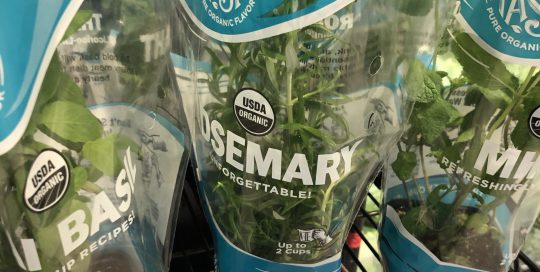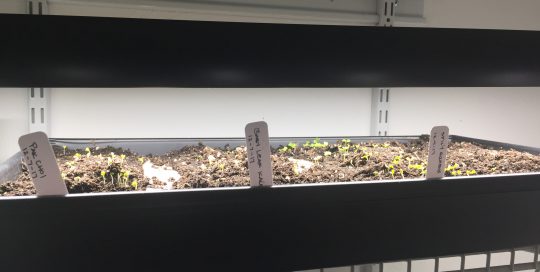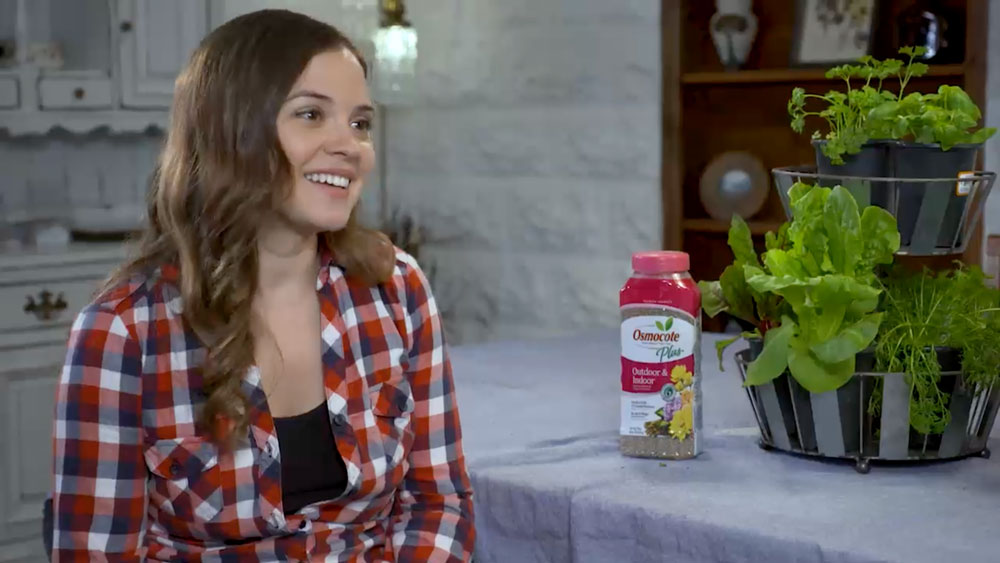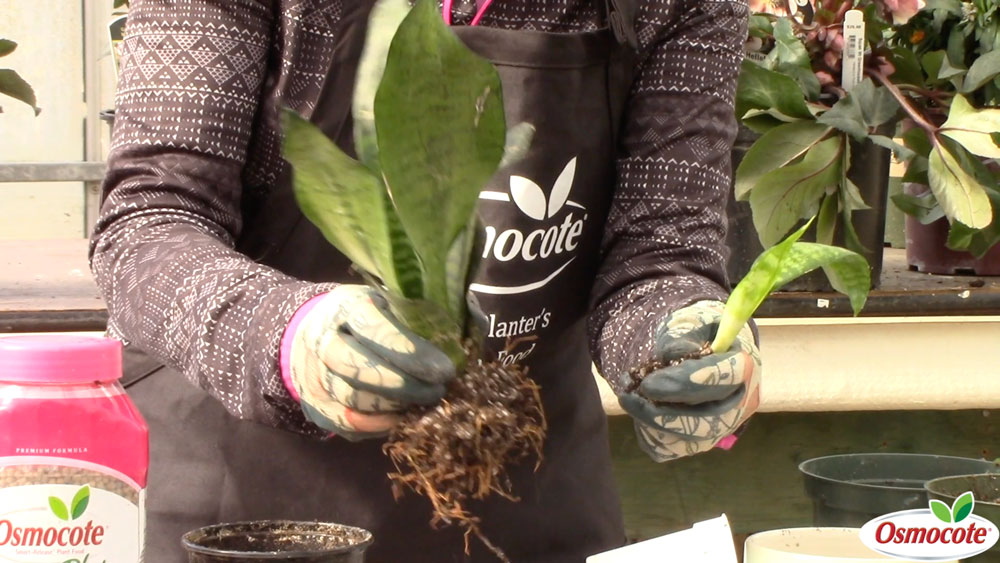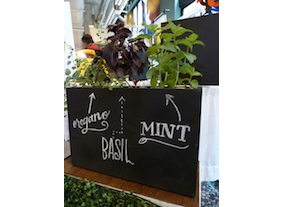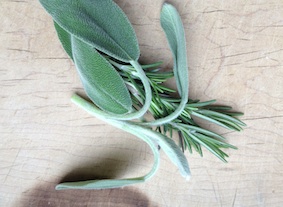Grow Fresh Greens Indoors This Winter
By Nina Koziol
How to Select an Indoor Container
Just about any sort of pot and container can be used for growing plants indoors. Try using a flat, shallow container as long as it has drainage holes and a tray below to catch water. Garden centers sell inexpensive seed-starting flats for this purpose. You can also use wide plastic pots that are 4” to 6” tall. If I run out of pots, I recycle large yogurt and cottage cheese containers. After a thorough cleaning, poke a few small holes in the bottom of each one for drainage. Because many of the indoor edibles such as lettuce have shallow roots, you don’t need a deep or expensive container.
What to Look for in a Potting Soil
‘Seed starting’ mix or soil-less potting mix can be purchased at the local garden center. After opening the bag, add a cup or two of water to moisten the mix. Next, scoop it into the pots and tamp it down before sowing seeds. While it may be tempting, garden soil is not suitable for indoor gardening. It’s too heavy for seed starting purposes and may contain organisms that affect seedlings. Soil-less seed starting or potting mixes contain no soil. They are typically made of peat moss, ground bark and other organic ingredients.
Growing Indoors with Seeds
Most seeds started indoors are small. Seeds of lettuce, for example, are only 1/16th inch long. When you are ready to plant, place them on top of the moistened potting mix, and press then down. You want them to be barely covered. If placed too deep, seeds may rot.
To keep the seeds moist, cover with plastic wrap and use a spray bottle to keep the soil surface damp. When using a seed tray with individual “cells,” sow 3-4 seeds in each cell. Lettuce, spinach and other salad greens grow nicely in these seed-starting containers. At some point, if you wish, transplant them into larger pots after they’ve grown a few sets of leaves. I’ve also grown lettuce in shallow plastic window boxes indoors where a tray catches run-off water. That way I can grow many plants in one, long container.
Position the containers in a sunny window or under the lights. Once the seedlings germinate, the plastic comes off. Because soil-less mixes dry out quickly, check the pots every day. Keep the mix moist but not soggy.
Getting Started with Microgreens
There are a few key differences between micro-greens and sprouts. Sprouts are basically newly sprouted seeds. Sprouts grow in dark, moist conditions and are eaten whole — seed, root, stem and undeveloped leaves. Microgreens, on the other hand, grow in potting mix, need regular watering to keep the seeds moist, and need light once the seeds sprout, either from overhead lights or a window with bright southern or western exposure.
Choose a shallow container that will hold 1 1/2 to 2 inches of potting mix. Very little room is needed for roots. I like to grow several types of microgreens in large plant pot saucers under fluorescent lights. You can buy bulk seed packets mail-order from sources such as Johnny’s Selected Seeds (www.johnnyseeds.com) in Maine. This retailer sells a “micro mix” of spicy and colorful mustards as well as individual fast-growing seed varieties, such as Chinese cabbage and mustard. The latter are ready to harvest in about 10 to 15 days.
How to Plant Microgreens
Only purchase untreated seeds that have been produced and packaged specifically for use as sprouts or microgreens. Make certain the seeds were not treated with fungicide or other chemicals. Fill a shallow container with the growing mix and sprinkle seeds evenly over the surface. Press the seeds gently into the top layer of soil and water lightly with a spray bottle. The seeds do not need light to germinate but should be covered in a layer of soil until they sprout. Alternatively, cover them with a wet paper towel or plastic wrap. Keep the seed moist all the time so the seeds won’t dry out.
Caring for and Harvesting Microgreens
Once the seeds sprout, remove any cover, but continue to keep the soil moist. Be Patient! The greens must remain in light for the next 7 to 14 days. Empty the saucers or trays that collect any excess water. The first set of leaves are called the seed leaves or cotyledons. Wait until the stem develops 2 or 3 sets of “true” leaves. Use scissors to snip the stems above the seed leaves, otherwise the plant will not grow again and you’ll only get one cutting of greens.

